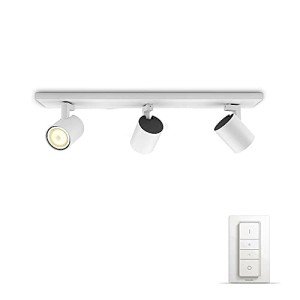The UK Lighting Company: Illuminating the Future of British Design
In an era where sustainability and aesthetics play an essential function in style, the UK lighting industry has emerged as a beacon of innovation. From elegant residential lighting fixtures to remarkable options for business spaces, UK lighting companies are pushing the borders of imagination and functionality. This article looks into the landscape of the lighting market in the UK, focusing on leading companies, design patterns, sustainability efforts, and frequently asked questions relating to lighting solutions.
Key Players in the UK Lighting Industry
The UK lighting market boasts numerous prominent companies known for their unique styles and commitment to quality. Below is a table showcasing some key gamers in the industry:
| Company Name | Specialization | Significant Products | Year Established |
|---|---|---|---|
| John Cullen | High-end domestic lighting | Custom design solutions | 1981 |
| Tom Dixon | Designer lighting | Iconic pendant lamps | 2002 |
| Anglepoise | Renowned task lighting | Initial 1227 lamp | 1932 |
| FLOS | Contemporary style | Architectural lighting | 1962 |
| J Adams Lighting | Energy-efficient options | LED fixtures and bulbs | 2010 |
1. John Cullen Lighting
Established in 1981, John Cullen Lighting has made a name for itself in the luxury sector of the marketplace. The company prides itself on its bespoke solutions, working carefully with architects and interior designers to produce special lighting experiences for high-end domestic tasks.
2. Tom Dixon
Tom Dixon was developed in 2002 and has become associated with modern high-end design. Known for its trendy pendant lamps and innovative use of materials, the company reflects a contemporary British visual that appeals to design enthusiasts worldwide.
3. Anglepoise
A quintessentially British brand, Anglepoise has actually been producing traditional job lamps considering that 1932. The Original 1227 lamp continues to be a popular option in numerous homes and workplaces due to its classic style and unrivaled versatility.
4. FLOS
A globally acknowledged name, FLOS integrates Italian artistry with British sensibilities. Developed in 1962, the company focuses on architectural lighting and has played a considerable function in public space and urban lighting designs.
5. J Adams Lighting
A newer entrant in the UK lighting market, J Adams Lighting concentrates on energy-efficient lighting options, mainly LED fixtures and bulbs. With rising Buy Industrial Lighting UK about energy usage, J Adams concentrates on providing sustainable lighting alternatives to both property and commercial clients.
Trends in UK Lighting Design
The UK lighting market is dynamic, with many patterns becoming designers accomplish a balance in between functionality and stylistic expression. A few of the most notable patterns consist of:
Sustainable Design
With sustainability ending up being a central issue, lots of lighting business are establishing energy-efficient items. LED innovation has actually taken spotlight, minimizing power consumption while improving luminance.
Minimalism
Minimalist designs have actually gotten traction among contemporary consumers. Tidy lines, muted colors, and simple kinds dominate modern lighting fixtures, enabling them to blend flawlessly into different interior designs.
Smart Lighting Solutions
Technological innovation has actually affected the evolution of lighting. Smart lighting systems now enable users to control lighting through apps and incorporate them into smart home environments. This trend has led to enhanced convenience and personalization.
Mixed Materials
Designers are increasingly exploring with mixed products, including elements such as metals, glass, and wood to develop distinct lighting setups. This approach improves visual interest and adds a tactile dimension to the designs.
Sustainability in the Lighting Industry
The growing emphasis on environmental sustainability requireds that the lighting industry embraces eco-friendly practices. Many UK lighting business are pioneering initiatives that add to a sustainable future, such as:
- Energy-efficient bulbs: Use of LED innovation decreases energy intake substantially.
- Recyclable materials: Companies are sourcing materials that are recyclable, therefore promoting a circular economy.
- Sourcing regional: Sourcing materials locally reduces transport emissions and supports local economies.
- Durability of products: Designing products with longer life expectancies decreases waste and motivates responsible usage.
Frequently Asked Questions (FAQs)
What kinds of lighting are readily available in the UK?
- Indoor lighting: Includes chandeliers, pendant lights, wall sconces, and ceiling fixtures.
- Outdoor lighting: Garden lights, pathway lighting, and security lights.
- Job lighting: Desk lamps and under-cabinet lights.
- Ambient lighting: Soft lighting services that create a basic lighting in an area.
How do I pick the ideal lighting for my space?
Consider the following:
- Purpose of the area.
- Preferred ambiance (cozy vs. bright).
- Size and layout of the room.
- Style and color of existing decoration.
- Energy effectiveness requirements.
How can I make my lighting more energy-efficient?
- Replace incandescent bulbs with LED or CFL bulbs.
- Install dimmer switches to control brightness effectively.
- Utilize smart lighting technologies.
- Think about natural light sources by putting mirrors strategically or using lighter colors.
Exist any grants or rewards for energy-efficient lighting in the UK?
Yes, the UK government and various local councils frequently offer incentives and grants for energy-efficient home upgrades, including lighting. It is suggested to inspect government websites for the most existing offerings.
The UK lighting market is a vibrant sector that remarkably intertwines innovation, creativity, and sustainability. With sneak a peek at this website varied range of business leading the charge, consumers have access to a remarkable selection of lighting solutions developed to improve both visual appeal and energy effectiveness. As technology advances and environmental concerns grow, the future of lighting in the UK promises to be a beacon of excellence, illuminating spaces with design while protecting the planet.

